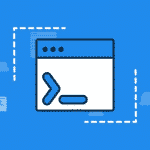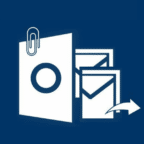
Often, the names of switches themselves are self-explanatory.
For example, /resetnavpane will empty and recreate your Navigation Pane. If you want to empty your Autocomplete list, take advantage of /cleanautocompletecache. If the program crashes, you may access the folders that were opened through /restore. Discover how such tools work, and ways to utilize them.
Using Command Line Switches for Exe
Release the full hidden potential of your mail client. These features can save you a lot of time and effort. They are not difficult to use once you grasp the basic logic. For instance, a special group of switches opens particular file types. You may use:
- /f <msgfilename> for a .msg file.
- /hol <holfilename.hol> for a .hol file.
- /ical <icsfilename> for a .ics file.
- /l <olkfilename> for an .olk file.
- /t <oftfilename> for an .oft file.
- /v <vcffilename> for a .vcf file.
- /vcal <vcsfilename> for a .vcs file.
- /x <xnkfilename> for an .xnk file.
As you can see, the function can be easily deduced from the name. To apply any switch, you should use the right procedure for your version of the mail and OS system. The process can be initiated in different ways. There are two mandatory phases.
Step 1: Summon Run
If you are familiar with the ‘Run’ feature, you know it is a useful box for opening programs or files. It is present in all versions of the operating system since 1995. A fixture of the Windows environment, Run is also a basic way to apply any switch. Here is how to use it.
On your keyboard, press two keys simultaneously: Windows Logo + R. This will summon the Run feature. This is not the only method to access the tool. Based on your OS version, you can do it by typing in menus:
- For Windows 7, this is the Search option of your Start Menu.
- For Windows 8, this is the Start Screen.
- For Windows 10, this is either the Cortana Search feature or Start Menu.

Generally, procedures vary. This means Outlook command line switches 2013 and Outlook command line switches 2016 are accessed differently.
Step 2: Type the Command
Now, you will enter the sequence to activate the desired switch. This is no rocket science: once you do it once, the task is a piece of cake. The only difficulty is the need to remember the command. For this purpose, print out the complete list of switches, and use it when necessary.
- Enter ‘outlook.exe’ in the box.
- Follow it with a single press of the Space key. Enter the ‘/’ sign (forward slash).
- Specify the switch you want to apply.
- Press ‘Enter’ or ‘OK’ for execution to begin.
For instance, consider the procedure for Outlook Exe cleanreminders. Here, the sequence looks this way: ‘outlook.exe /cleanreminders’. As a result, your reminders are erased and recreated. Simple, isn’t it?
Want Your Mail to Start in Calendar?
Shortcuts make our lives easier by providing instantaneous access to the right feature. For instance, Outlook Exe cleanviews brings back default views, while Outlook cleanfreebusy recreates free/busy information. One or more functions may be packed into a single shortcut. It is a useful way to automate various tasks.
A valuable feature is Outlook startup switches. Some users prefer their mail client to start in a non-default location. This way, the first thing you see when the program opens is not your inbox, but Calendar, Outlook Today, or another profile element. Essentially, you may program the mail system to start in a special folder and create a shortcut for this. In the following example, we will automate the software to start up in the Calendar folder.
Stage 1: Finding explorer.exe
The initial step towards startup modification is the location of the core file. Different versions of Windows store the file in different destinations. Named outlook.exe, it may be found in several ways.
First, users may type the name on their Start Menu or Start Screen (for Windows 7 and 8, respectively). Alternatively, open Windows explorer and try entering the precise path. The latter will depend on your edition of the operating environment and the program. There are 3 possible sequences:
- 2010 edition on a 32-bit OS:
C:\Program Files\Microsoft Office\Office14\Outlook.exe
- 2013 edition on a 32-bit/64-bit OS:
C:\Program Files (x86)\Microsoft Office\Office15\Outlook.exe
- Office 365 regardless of OS: C:\Program Files\Microsoft Office\root\office16\Outlook.exe
Have you located the file? Congratulation! Now, you need to right-click on it for the shortcut menu to appear. From there, take steps ‘Send To’ — ‘Desktop’ for the shortcut to land on your desktop. Now, it is ready for use.
Tip for Windows 8 and 10
If you have used the Start Menu or Start Screen to find the location, there are a few extra steps to take.
- Right-click on the search result and proceed to select “Open File Location”. You should now see a new Explorer window pop up. There, outlook.exe is marked with color.
- Right-click on the file and follow the sequence ‘Send To’ — ‘Desktop’. Eventually, the shortcut is generated just like in the previous example.
Stage 2: Tweaking Properties
- Head over to your Desktop (Windows +D keys).
- Find the newly created shortcut and right-click on it.
- In the opening menu, select ‘Properties’. You will now see a tab titled ‘Shortcut’.
- Find the box titled ‘Target’. This is where the path for outlook.exe is stored.
- With a one-time pressing of the Space key, type a space at the end of the path, and enter the following: /select outlook:calendar.
- Wrap up with ‘OK’.
In any case, your command in full should look this way: “C:\Program Files\Microsoft Office\root\office16\Outlook.exe” /select outlook:calendar. Now, you can always run the mail client by double-clicking on the Desktop shortcut.
Tip: New Message Setup
You may want the mail system to create a new message automatically upon launch. This way, you will always be welcomed with an empty message window ready to be filled. To achieve this, go through the above-mentioned steps, as the procedure is almost identical. The only difference is the path to specify. Instead of ‘/select outlook:calendar’, enter ‘/c ipm.note’.
Tip: Sending Files via Explorer
Another useful command will allow you to send files right from your Windows Explorer. This way, you do not need to open the mail client. Thanks to the /a switch, you can create a special type of ‘Send To’ shortcut. This allows you to pick files via the Explorer, and have them attached to a message immediately. Message creation now takes a few steps: ‘Send To’ — ‘Mail Recipient’. Your signature is added automatically.
Overview of Cmd Switches
Here are commonly used features divided by functions. Be sure to check if a switch you need is compatible with your version of the mail client and the operating system.
Switches That Modify Launch
These allow you to change what the mail client does upon launch. Certain features may be activated or deactivated, all through a single switch command. You may easily turn off initial checking for new mail, remove extensions, or have a certain window opened automatically upon launch.
- Sometimes, you need Outlook to open as if it was run for the first time. Here, /firstrun comes in handy.
- If you want the program to immediately search for meeting requests upon launch, and auto-add them to your Calendar, use /sniff.
- To launch the mail system without extensions, customized toolbar, or Reading Pane, take advantage of /safe.
- To deactivate extensions, but keep them in the Add-In Manager, use either /safe:3 or /noextensions.
- It is possible to deactivate the Reading Pane only. This is achieved by using /safe:1. If you also need to erase it from the View menu, apply /nopreview instead.
- If you do not want Outlook to check for new email upon launch, there are two switches for that — /safe:2 and /nopollmail.
- If you want to prohibit the use of customized toolbars and the *.fav file upon launch, use /safe:4 or /nocustomize.
- You can have the mail client launched with a particular folder (e.g., the Calendar) opened in a new window. To do this, use /select foldername.
- Finally, to open the program in an existing Outlook window (if available), use the /recycle function together with /explorer or /folder.
Outlook Command Line Switches for Tidying Up
A multitude of elements may be erased through simple switches. Once you get used to the procedure, keeping your system tidy will be easy. Here is what you can clean, and the sequences of symbols and letters to use.
- AutoComplete list: /cleanautocompletecache
- Custom category names: /cleancategories
- Client-based rules: /cleanclientrules.
- Client- and server-based rules: /cleanrules.
- Server-based rules only: /cleanserverrules.
- Subscriptions from Account Settings: /cleansharing.
- Views: /cleanviews (return to default).
Message-Related Controls
These maximize the convenience of working with correspondence through the Microsoft client. You can have a particular file attached automatically, create items of particular message classes, and even launch the printing function. Every time, it is as easy as 1-2-3! Just enter the necessary combination into the path. Here are some present opportunities:
- A special switch allows you to create an item with a certain file attached to it. For this, use /a path:\<filename>.
- If you want to generate an item of a certain class, use /c <messageclass>.
- You may easily provide an item with an email name through the /m emailname switch (used with the /c command-line parameter).
- It is even possible to print a particular message of the *.msg format. For this, use the handy /p <msgfilename>switch.
Import-Related Controls
These will modify the way files are fed into your mail system. Here, opportunities are relatively limited in comparison with other categories. Still, you may find these features useful.
- To feed data from an .nk2 file (containing nicknames), take advantage of the /importNK2 feature.
- To open or import a particular MAPI profile, use the corresponding switch: /importprf path:\<filename.prf>.
- /promptimportprf path:\<filename.prf> and/importprf are two useful switches for importing of *.prf files. The first variation also provides a prompt and opportunity to cancel.
Switches That Reset Parameters
If you need to change different constituents of your email environment to default, switches are a great help. They provide quick access to powerful restore functions. One of these has already been mentioned: /restore attempts to open the profile and folders you were using before a system crash. So, what do you want to reset?
- Folder names: /resetfoldernames.
- Folders for default location: /resetfolders.
- Instant Search criteria: /resetsearchcriteria.
- Outlook Bar: /resetoutlookbar.
- Shared folders on Navigation Pane: /resetsharedfolders.
- To-Do Bar task list for your profile: /resettodobar.
To rewrite certain registry keys and re-associate file extensions, use a combination of /y and /regserver. This gets the job done in no time.
Miscellaneous
There are many other things you can accomplish with the right switches. Consider the following list of suggestions. There are more!
- To summon a Visual Basic program: /altvba <otmfilename> .
- To assign default manager of correspondence, addresses, and news: /checkclient.
- To open a new Explorer window: /explorer.
- To summon the Advanced Find dialog box: /finder.
- To open a new folder window: /folder.
- To open a Help window with a certain subject covered: /launchtraininghelp assetid.
- To load a particular shortcuts file (.fav): /s <filename>.
The Bottom Line
These switches are convenient yet lesser-known tools that fulfill a broad range of functions. Arm yourself with a list and apply this knowledge when necessary. All you need is to open the Run box and enter the necessary sequence. Even if you have never used commands before, the process will be intuitive once you get used to it. Overall, switches can save you a lot of time and streamline electronic correspondence.









I need help! I received a message that cannot be previewed. It is just crashing Outlook when I attempt to view it. Now my Outlook starts and selects this message so it crashes again, I can’t start Outlook anymore. Is there a workaround?